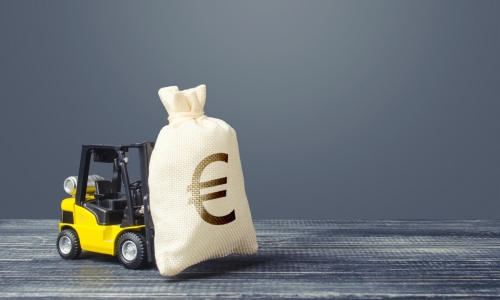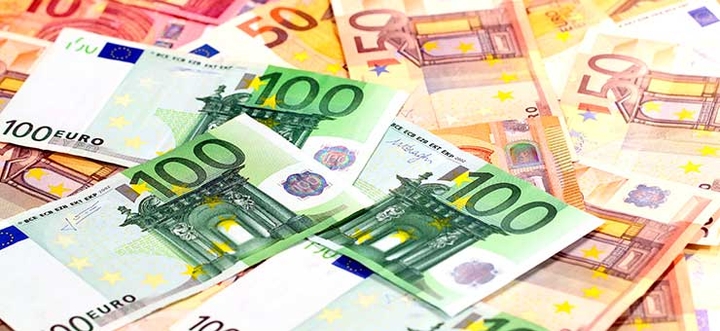Expand your Horizons: Exporting to Europe

So what does this mean? Small businesses clearly see great potential in selling their products in Europe, but find it difficult to navigate trade rules and get a foothold in this part of the world. But it doesn’t have to be as complicated as you think. Follow our guide to start your European export journey.

The opportunities Europe offers
The population of the European Union is estimated to be over 510 million people, and EU international trade in goods with the rest of the world (both exports and imports) was valued at €3,453 billion in 2016. Around 42% of EU imports came from Asian countries and around 20% from North America, while other European countries account for around 22% (figures from Eurostat).
The main goods that are shipped to Europe include machinery, vehicles, plastic, crude oil, metals, food and clothing. PAPS, which stands for Pre-Arrival Processing System, and the UK runs the The European Commission says: “Two-thirds of EU imports are raw materials, intermediary goods and components needed for our companies' production processes.”
Understanding European markets
Although the EU is a political and economic union with a standardized system of laws, it’s important to remember that it is comprised of 28 very different member states. There are significant cultural differences between EU countries, and residents of each country have distinct product preferences and purchasing habits.
EU countries also have different levels of wealth and disposable income, from affluent countries like Luxembourg and Germany, to relatively poor countries like Albania and Bosnia & Herzegovina.
When you’re embarking on your European export journey, you need to do careful research into the countries where you’re planning to sell your goods, and develop a good understanding of demand for your product and how it should be branded and marketed.
The World Bank’s country profiles and the US government's country commercial guides are good places to begin. Our market intelligence guide can point you in the direction of further country profiles and offer more tips on international market research.
Understanding European regulatory requirements
Goods imported into the EU are subject to EU-wide import regulations, customs tariffs and customs procedures.
The EU believes that products should be able to be freely imported. This means that most products don’t need an import license, and there are rarely quotas or other restrictions, unless safeguard measures are temporarily imposed because an industry has been affected by a sudden increase in imports.
Safeguard measures may mean an import or tariff quota is imposed, and/or a system of automatic import licensing (‘surveillance’) is introduced. For example, in April 2016 surveillance was announced on the imports of certain iron and steel products, due to a dramatic increase in Chinese steel exports, and a fall in EU exports of steel products. Surveillance means that the EU could gather statistical information and analyze import trends, helping it deal with the vulnerability of the EU steel market to sudden changes in world steel markets. You can find other documents relating to safeguards on the European Commission website.
In 2015, the EU published a codified version of its common rules for imports into the EU from other countries, including the procedure for EU investigation before safeguards are applied. You can find this on the EUR-Lex website.
CE marking for certain products
Under the New Approach directives, certain products have to meet specific quality standards. These products include toys, machinery, medical devices and gas appliances. You can find full lists of the product categories online, including on the UK government website.
If your product is covered by one of these directives, you must make sure that it complies with relevant EU health, safety and regulatory requirements, and affix the Conformité Européenne (CE) mark as an indicator of compliance.
The way that you certify your product depends on what it is, and you’ll need to check the directives to find out. Most products are considered low-risk, which means you can certify them yourself. You’ll need to prepare a declaration of conformity and add the CE marking. Products that are considered higher risk must be independently certified by a “notified body”, which is an independent test lab designated by an EU country.
Shipments of CE-certified products into Europe must be accompanied by a declaration of conformity, and the seller must keep a technical file proving the products meet the requirements.
Both manufacturers and distributors can be held liable for non-compliance, and exports that don’t conform to the regulations may be blocked or held at customs.
Customs classifications and customs duties
You usually have to pay duty on goods when you bring them into the European Union. The amount you have to pay depends on how your products are classified under EU trade tariffs, and what kind of trade agreement your country has in place with the EU. You can use this tariff search engine to find out what you’ll need to pay.
Under the rule of ‘preferential origin’, some goods can enter the EU at a reduced or zero rate of duty. This applies if the goods originate from a country with a preferential agreement with the EU. ‘Originate’ means that the goods have been manufactured from raw materials or components that have been grown or produced in the country, or have undergone a certain amount of working or processing in the country.
Packaging and labeling rules
Under an EU directive that aims to minimize the impact of packaging waste on the environment, manufacturers and exporters must try to limit the packaging they use on products brought into the EU. You can find a description of the essential requirements in this annex.
There are also specific requirements that relate to the use of wood packaging. All packaging made from wood or other plant products from non-EU countries must be heat treated or fumigated, debarked, and officially marked with certain codes.
You should also find out whether you need to include any particular marks or labels on your product or packaging. Some product types - including textiles, cosmetics and household appliances - require mandatory marks and labels. For example, textile products must be labeled with details of the fabric’s content and composition. Dangerous substances must be labeled with the name and origin of the substance, the appropriate danger symbol, and a description of the specific risks. The European Commission has a useful EU labeling guide with further information.
Shipping to Europe
A good shipping partner will help you manage the risks of exporting, comply with EU regulations, and navigate export and import rules. Look for a reliable freight forwarder with a reputation for transporting products reliably and promptly.
Visit the Agility website to find out how we can help make your international shipment a success, or use Shipa Freight to get a quick freight quote. Just fill in a few simple details about your shipment to Europe and we’ll do all the hard work for you.
Europe is a big market with huge amounts of potential for overseas sellers, and the member countries are keen to keep markets open worldwide and to encourage imports into Europe. As long as you comply with EU regulations and get to grips with tariffs, selling your products in the EU could greatly extend your reach and help you grow your business. Good luck!


